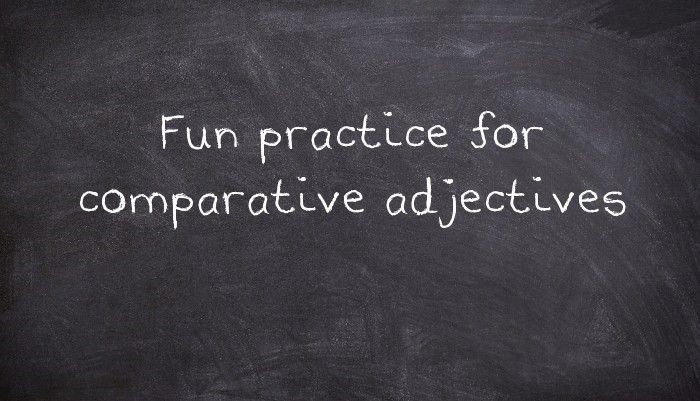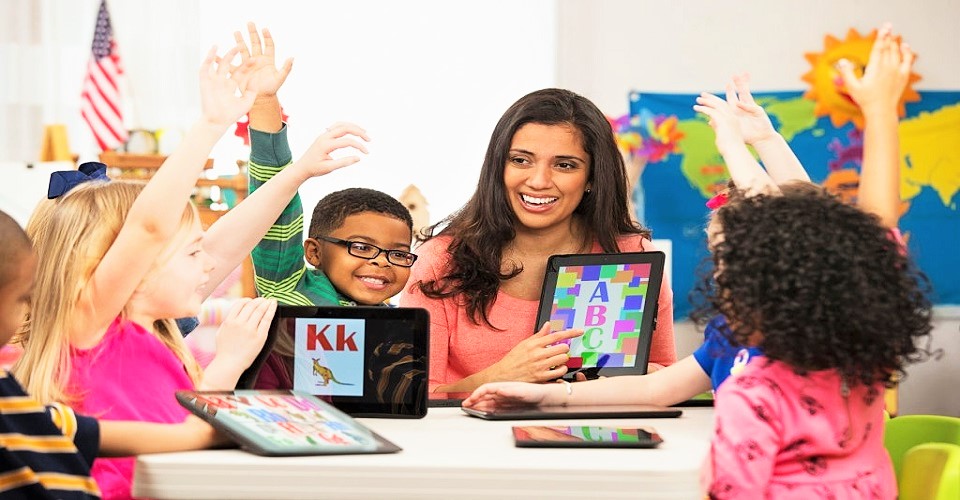7 Enjoyable Teaching Practices for Comparative Adjectives While Teaching English as a Foreign Language
We often see comparative adjectives in the beginner or intermediate ESL textbooks. When we use adjectives appropriately, they can change any old sentence into something quite special. With the use of comparative adjectives, sentences become much more interesting and communicative! There are numerous circumstances in real life when we use comparative sentences, isn’t it? So, while teaching English as a foreign language with an online TEFL course, you can make practical sentences that will make more sense to them.
Do you know it’s believed that the English language is made up of more words than any other language in the world? Well, when you look at the number of adjectives, it’s not hard to believe though. As per the nature of English language, it likes to pronounce situation and surroundings in a great feature. However, for the ESL students, it can be overwhelming sometimes. Therefore, it’s significant for ESL learners to become acquainted with different types of adjectives. Also, to accomplish a certain level of fluency within the English language, a firm grasp on adjective is needed.
Let’s discover the different sorts of adjectives and how to teach adjectives in your ESL classroom.
All you need to do is make it appropriate and authentic.
Well, the construction of comparative adjectives in English is quite simple. Do not be astounded if your learners display some confusion with the concept of comparative adjectives as many languages do not have similar adjectives. Just try to enlighten the idea of comparative adjectives in a simple way. Make sure this idea makes sense to you and you can answer the questions that your students may have on the subject. We would suggest you to be easy-going and use teachable instants as they come along.
Keep on reading for everything you need to know to use comparative adjectives!
Technology
So… how to teach ESL students to use comparative adjectives?
Use technology. Why? Because technology is fluctuating the matter on how we communicate with others, and so on. Also, smartphones have become universal as texting replaces voice calls. While introducing the different comparative adjectives, sidestep adjectives that don’t follow the syllable rule.
For example, the relative form of rude may be ruder, depending on your diversity of English. So, don’t present adjectives like ferocious, imprudent, accurate, isolated or exhausted. Also, don’t forget to introduce the spelling deviations. Try to implement the use of the definite article, the. Though we don’t use the in every situation, still it’s better for your students to learn this definite article the, from the beginning.
Predicting Games
One of the simplest ways to teach ESL students to use comparative adjectives is incorporating different guessing games. If you wish you can add some personalisation as well. For example, a sentence can be used “It is the biggest thing here, nevertheless it is shorter than a giraffe. It isn’t as heavyweight as a whale” to describe “elephant”. If your students guess it correctly, well and good. Wrong guesses should be responded to with another clue comparing the real object with that incorrect guess, like “No, this thing isn’t a whale. It isn't as scary as a shark” and unfolding that thing with comparisons until someone guesses correctly. Try to understand these sentences and you will observe the differences between them.
In order to make this activity more interesting, instead of shouting out the correct name of the thing to guess, learners could slap the related flashcard, or touch the relevant classroom object, etc. The things described can be ones from the room, on a worksheet or on the board – or learners can think of their thoughts.
Picture Race
Well, the picture race is useful for teaching descriptive adjectives to your ESL learners. Print out some pictures you want to use in the activity before the class. Make sure you add assortment to your pictures by choosing a mixture of people, places and things, etc. Now, divide your students into small teams in the class. Distribute a sheet of paper and a pen to each team.

(Ref: https://bit.ly/3r7Qtc6)
Now display one of the images you’ve prepared in the front of the students. Then ask your teams to race against each other and to come up with as many adjectives as they can to pronounce the image. Give them two minutes (as per your choice). After that, ask each team to read out their list of adjectives.
Teams collect points for every adjective they came up. Once the points are equated, show the second picture. Continue with as many rounds as you can. The team with the most points at the end of the game wins! This game is very engaging as some of your students may have a better vocabulary and others can learn from them.
Taboo
This is a fun, high energy game for teaching Positive Adjectives, Comparative Adjectives, Superlative Adjectives, and Descriptive Adjectives. Start by enquiring for a volunteer to stand in front of the class. After that, ask the volunteer to think of an object (It can be anything. A person, place or thing).
Once the volunteer has an image in mind, he or she should begin to define the object by using as many adjectives as possible to describe the thing. The rest of the class must attempt to guess what the object is based on the explanation. The student who correctly guesses the object goes next. Just make sure it should generally be something most students would be able to speculate.
Card Games
Another fun engaging teaching activity is card games. This is an entertaining way to get learners to use vocabulary and grammar. It is played by making sets of cards with communal vocabulary, then you need to make a set of 24 of them for every 4 students. The first learners draw the first two cards and then have to make a sentence by using a comparative adjective. For example, “Ice-cream is more interesting than apples!”
Well, if your learners can do it in the chosen time (which you will give), they keep the cards and get a point. You can act as a referee for this. If not, the cards go back into the deck and the next student goes. The winner is the person with the most cards at the end.
Discussion Questions
Generally, it is easy to start discussion questions with comparatives in them. For example, “How this place is better than what it was 20 years ago?” and “How would you feel if this place became much bigger?”. After your students finish discussing those questions, give them additional kind of the worksheet with the comparative forms taken out, like “How is this place (good) than 20 years ago?” to fill in. Also, sometimes it is possible to form many questions that don’t have comparatives but should produce those forms in their answers, like “How would you change this place if you could?”
Adjective Bingo
This is useful for teaching Positive Adjectives, Comparative Adjectives, Superlative Adjectives, and Descriptive Adjectives. Make some bingo cards with different images of objects as well as items. Then give a bingo card to each student or group in class. Then stand at the front of the class and call out different adjectives with details about the individual objects.
Now give students a chance to understand if they have an item that matches your description. For example, you may say “green apple.” On some bingo boards, you included a “green apple” and on others, you included a “red apple.” Ask students to listen cautiously to fill in their bingo boards correctly. If a student gets it, they should call out “BINGO!” Make sure you check their board to confirm they positively achieved “BINGO!”
Well, after learning some of the engaging teaching activities that you can add your teaching techniques, let’s just check the types of adjectives every ESL student should be familiar with.
- Positive Adjectives - such as “appreciative,” “significant,” “interested” and “practical” etc. are considered positive adjectives.
- Comparative Adjectives - Your house is larger than my house.
- Superlative Adjectives - The metro is the easiest way to get city centre.
- Descriptive Adjectives - My brother has black hair, but I have brown hair.
To make this matter easier for your students, try teaching adjectives in groups rather than separately distinct vocabulary words.
Your students will find the exercises much more engaging and entertaining. Of course, there’s more to it than a few simple instructions in teaching English as a foreign language with an online TEFL course. Adjectives are the excitements that add essence to the English language. With these teaching activities, your learners will start to master adjectives to enhance their English in no time!




